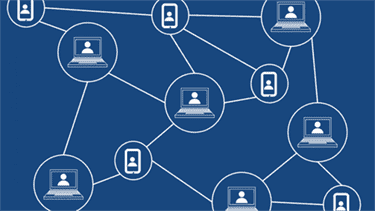Considering how the Scrum framework is structured, there are a lot of resources that go into its total implementation. For businesses that do not possess these resources, either in office space, manpower, or even time availability, Scrumban could be an option for them for more flexible workflows. Setting priorities on tasks means informing your team members that those tasks at the top of the list need to be dealt with first. When moving tasks from the “backlog” section to the “WIP” section, they know which tasks to pick. Where a WIP limit is set, they easily know which tasks make it into that section. The second section comprises tasks and processes currently being worked on.
- As the project nears its deadline, restrictions are placed on tasks.
- Additionally, you can also implement 15 minute standup sessions as you’d implement in Scrum for daily check-ins.
- So, if a project has a WIP limit of 5, that means that no more than 5 tasks should be worked on at the same time.
- Scrumban is best used by a team that already knows some facets of Scrum or Kanban.
- Scrumban works by merging the predictive structure of Scrum with the flexibility of the Kanban method.
- And scrumban would certainly fall under the umbrella of hybridized agile.
- Scrum revolves around a set of scrum ceremonies, including sprint planning, daily scrum, sprint review, retrospective, and backlog refinement.
Keeping both the order and the flexibility of the two frameworks. In Scrumban, there is a complete workflow visualization due to mapping all work stages on comprehensive Kanban boards. This provides more clarity to the process and allows all team members to be on the same page.
Terms
Ora is project management software designed for software developers, product teams, and startups. The tasks that your team has planned for the next iteration https://www.globalcloudteam.com/ are added to the To Do section of the board. Teams use Scrumban to better guide and manage the development of a product, service, or maintenance-based tasks.

Team members can take turns running the daily standup meeting. Sprint planning can be done every two weeks or as needed whenever a prioritized list of tasks must be generated. WIP limits are meant to keep team members focused on a limited number of tasks and ensure meaningful progress toward completing them.
What Is Scrumban and How Does it Work?
Thus, it is not surprising that more and more organizations are adopting Scrumban to eliminate the limitations of using only one method- Scrum or Kanban. The Scrumban methodology can be used for projects that require certain levels of structured and continuous workflow. Scrum teams are responsible for breaking the work into small manageable tasks on a priority basis. Its main objective is to complete the goals the product owner sets within the fixed-length development cycles. In the world of project management, there is constant evolution and transformation of one methodology into another. The combination of traditional and agile methodologies has given rise to the hybrid project management model.

This also contributes to faster status updates as the Kanban boards act as “radiators” of information. To use Scrum and Kanban together, managers should explore the needs of their teams. For example, Scrum could be more suitable for processes where the focus is only on building a product that needs to be released per a given interval. Kanban would work better in a scenario where priorities frequently change, and work enters the process in an ad-hoc manner.
Kanban
When it comes to task delegation, Scrumban borrows from Kanban and not Scrum. This is the pull system, where each team member pulls a new task from the to-do column. For example, Scrumban method takes the agile approach to workflows from Kanban, like the pull system where everyone grabs whichever task is ready without strict assignments.

Work iterations are one of the most important elements of Scrumban projects. These are mini scrum sprints, and are kept short so the team can easily make changes to their work if they need to. Iterations are measured in weeks and typically kept below two. One aspect of implementing scrumban (which we’ll cover more extensively later on) is that the team stops assigning story points to user stories. Overall it increases visibility and makes the workflow more fluid, allowing teams to work at a steady pace. Scrum is an agile framework developed by Jeff Sutherland and Ken Schwaber in the 90s.
What Is Scrumban? How It Differs from Scrum & Kanban
These current projects are much more complex and require elaborate planning. The Scrumban method helps executive teams deliver projects successfully using Scrum’s structure and Kanban’s flexibility. It uses the best features of both disciplines to meet the organization’s and its stakeholders’ requirements. It is a Lean approach to delivering projects that focuses on increasing workflow efficiency.
Scrum is an Agile framework that consists of one to four-week sprints. It is designed to help small self-organized teams consistently deliver concrete products or outcomes. Scrumban is an interesting concept that is halfway between Scrum and Kanban — two different Agile methodologies for managing https://www.globalcloudteam.com/what-is-scrumban-things-you-should-know-about-scrum-kanban-hybrid/ projects. It was initially created to help project teams transition from Scrum and Kanban. But, many teams discovered that Scrumban enables them to capture the best of both worlds. A core part about Scrumban is creating a list of tasks to keep track of what you’ll work on during your iterations.
The Basics of Kanban
Much of the scrum framework actually is push, so this means a lot needs to be switched around. For example, the sprint planning pushes work into the workflow, and adding names to user stories also pushes these tasks onto certain individuals. As previously stated, scrumban starts with the scrum framework, and weaves elements of kanban and lean into it. It is flexible and has a better success rate – In Scrumban, team members are free from the hassles of individual roles, planning, and reporting meetings. The flexibility that comes from the transparency of the tasks at hand helps them to perform better.
In this case, it might be a soft specialization, where some of us prefer doing one type of work more than another, even if we are capable of doing it all. It’s important to understand that this kind of pull workflow system allows specialization but does not enforce specialization. The team owns the work and the workflow, and it’s up to the team to figure out how to get it done efficiently. A kanban represents a portion of the productive capacity of some closed internal economy.
Project Management
This greatly reduces the overhead and ceremony of iteration planning. Time spent batch processing for iteration planning estimation can be replaced with a quality control inspection at the time that work is promoted to the ready queue. If a work item is ill- formed, then it gets bounced and repeat offenders get a root cause analysis. So, here are two seemingly unrelated agile methodologies that fall under the larger umbrella of project management. But just like chocolate and peanut butter, when you put them together you get something not only tasty but highly effective.